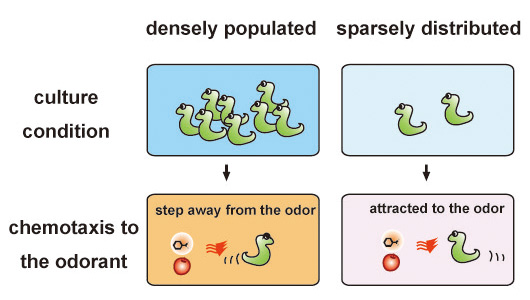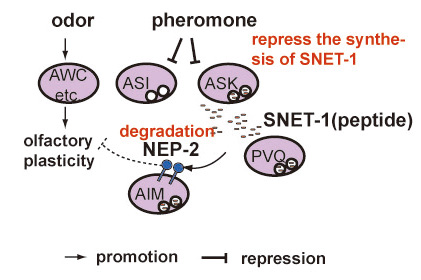Olfactory plasticity is regulated by pheromonal signaling in Caenorhabditis elegans
Animals aggregate, breed, and propagate at comfortable places. However, under too high population density, animals switch their behavior to dispersal, a well-characterized strategy called population density-dependent dispersal. This strategy is beneficial for the entire species because animals can explore new habitats in preparation for food depletion. We found that the olfactory plasticity of Caenorhabditis elegans is dependent on population density (Fig.1). This phenomenon appears to be a specific example of population density-dependent dispersal. We further examined the mechanism underlying this behavioral regulation. The information of population density is mediated by pheromonal signaling. A peptide, suppressor of NEP-2 (SNET-1), negatively regulates olfactory plasticity and its expression is down-regulated by the pheromone. NEP-2, a homolog of the extracellular peptidase neprilysin, antagonizes SNET-1, and this function is essential for olfactory plasticity (Fig.2). These results suggest that population density information is transmitted through the external pheromone and endogenous peptide signaling to modulate chemotactic behavior.
Program member
Yuichi Iino (Department of Biophysics and Biochemistry, Graduate School of Science)

Fig.1 Pheromone-dependent regulation of olfactory plasticity.

Fig.2 Possible roles for NEP-2 and SNET-1 in the regulation of olfactory plasticity.
